2022
Space Force Budget by Category, 2021-2023
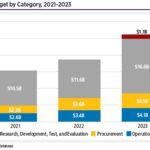
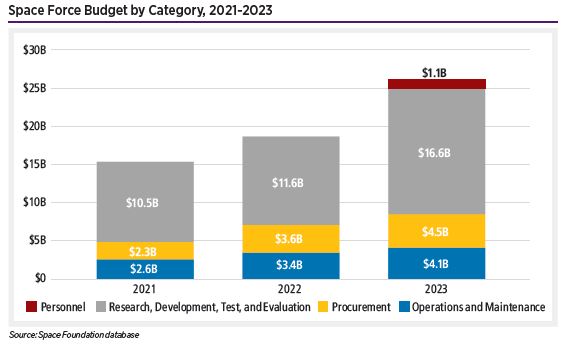
In recent years, space has reestablished itself as an important component of defense strategy alongside the establishment of the Space Force and large budget increases for space programs. The Space Force received $1.7 billion more than originally requested for fiscal year 2023, resulting in $7.1 billion (39%) more than the enacted 2022 budget.
Per Nation Mass Share of an Estimated 973,000 KG, 2022
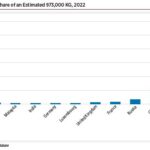
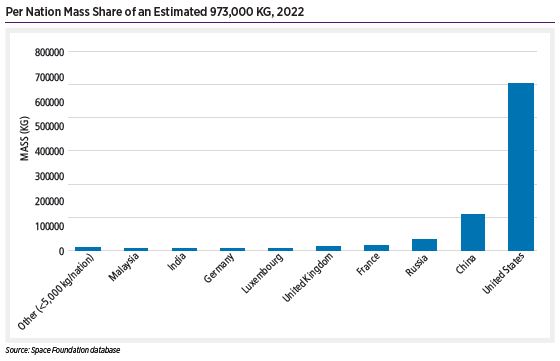
Operators deployed ~421 spacecraft with a mass of 200 kg or less, 18% of all deployed spacecraft in 2022. SpaceX’s Starlink satellites comprised over half the spacecraft mass deployed in 2022. The company’s Starlink deployments added up to 518,523 kg, nearly double the 257,140 kg it deployed in 2021. The largest spacecraft deployed during 2022 was Lockheed Martin’s Orion space capsule (25,848 kg), deployed during NASA’s first Artemis/Space Launch System launch.
Spacecraft Deployed Per Mass Range, 2022
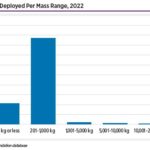
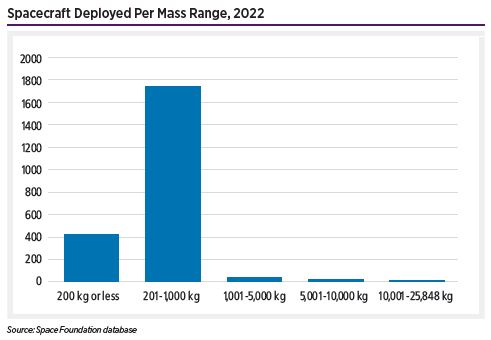
Mass estimates of all spacecraft deployed during 2022 exclude many of China’s spacecraft deployments and all U.S. classified spacecraft. However, without the mass totals from those two spacecraft operators, the overall spacecraft mass deployed during 2022 is estimated to be ~961,200 kilograms(kg), averaging ~415 kg per deployed spacecraft.
EO-RS Payload Shares, 2022
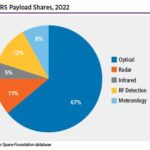
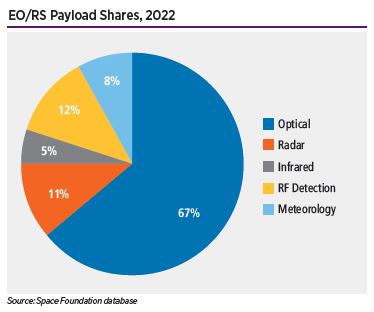
Satellites deployed with EO/RS payloads in 2022 (265) exceeded EO/RS satellite deployments in 2021 (191). More than half of the EO/RS payloads (149) involved optical imagery collection system. Other EO/RS satellites hosted payloads that detect radio waves emanating from the Earth. Satellites with synthetic aperture radar (SAR) payloads made up about 11% (24) of EO/RS satellite deployments in 2022,
Shares of Major Communications Payload, 2022
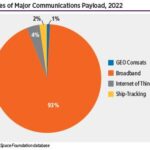
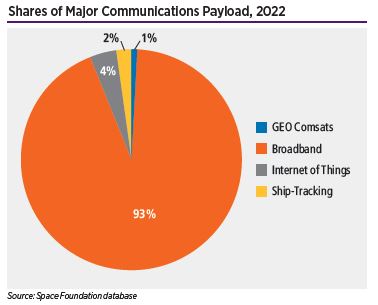
U.S. company SpaceX Starlink deployed 1,689 satellites, a 71% increase from the 989 satellites it deployed in 2021. On the other hand, OneWeb, a U.K. company, deployed 110 satellites, less than half the number it deployed the previous year (284). Also falling under the communications category were satellites with Internet of Things (IoT) payloads. Operators deployed 84 IoT satellites in 2022. Also under the communications category were the 27 satellites hosting ship-tracking payloads deployed in 2022.
Spacecraft Payload Share, 2022
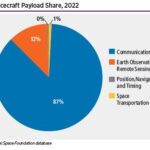
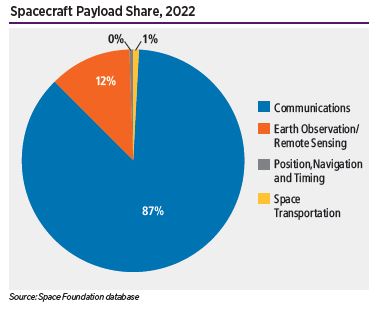
The 2,354 spacecraft deployed during 2022 each contained at least one payload to fulfill mission requirements. The Space Report separates those payloads into four categories: communications; EO/RS; position, navigation, and timing (PNT); and space transportation.
Spacecraft Mission Segment Shares by Nation, 2022
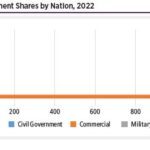
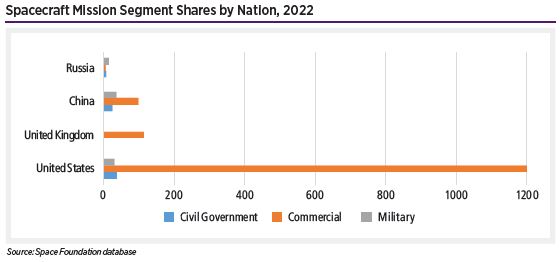
Compared with 2021’s 90% commercial spacecraft deployment share, 2022’s increased to 91%, even as spacecraft deployed in 2022 grew by 36% over the previous year. Spacecraft with civil government mission payloads accounted for 107 (4.5%) of all spacecraft deployed in 2022, slightly higher than 2021’s 99 civil government spacecraft deployments. Military missions comprised the remaining 3.5% (80) of the world’s deployed spacecraft in 2022, higher than the 69 military spacecraft deployments in 2021.
Estimated U.S. Department of Defense Space Spending, 2005-2022
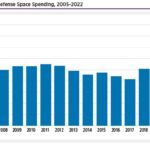
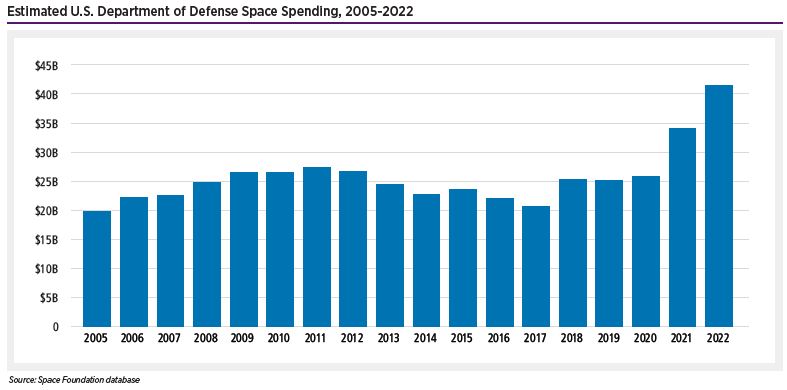
This developing space strategy is reflected in growing military space spending by the United States, with the Pentagon more than doubling space budgets from $19.7 billion in 2005 to an estimated $41.4 billion in 2022.
Index Weight by Listing Country as of Dec. 16, 2022
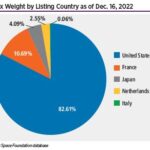
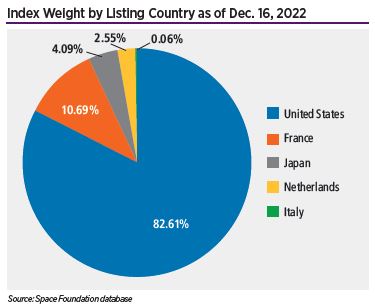
As of December, U.S.-listed companies comprised 82.61% of the weight of the overall index, with France in second place at 10.69%, Japan at 4.09%, the Netherlands at 2.55%, and Italy at 0.06%. Canada was no longer represented due to the removal of MDA, and Italy’s share dropped by a factor of 10 due to the removal of Avio.
S-Network Space Index vs. Benchmark Indexes, 2022
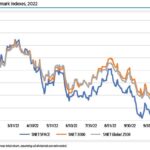
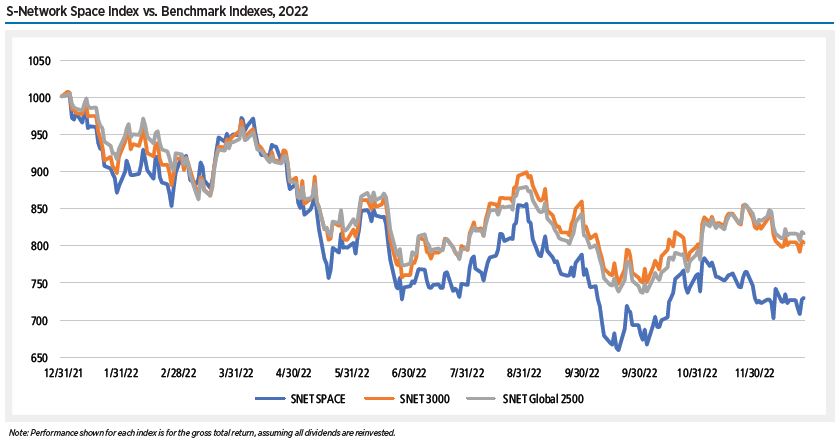
Assessing the performance of the S-Network Space Index for the entirety of 2022, poor performance during the first half of the year resulted in overall losses of 26.8%. This compares with annual declines of 19.5% for the SNET 3000 and 18.3% for the SNET Global 2500, which had a slightly better first half of the year.